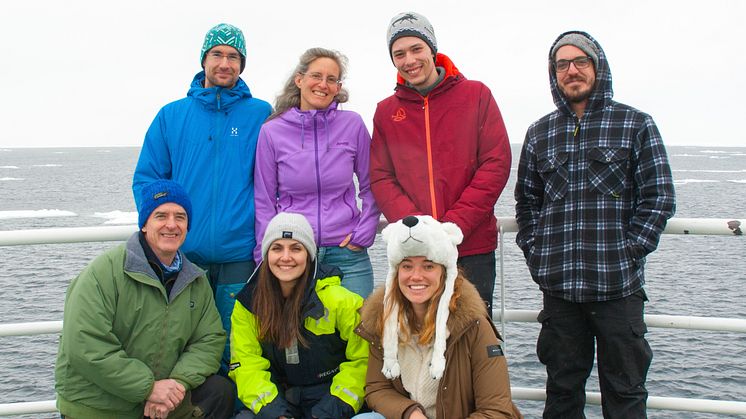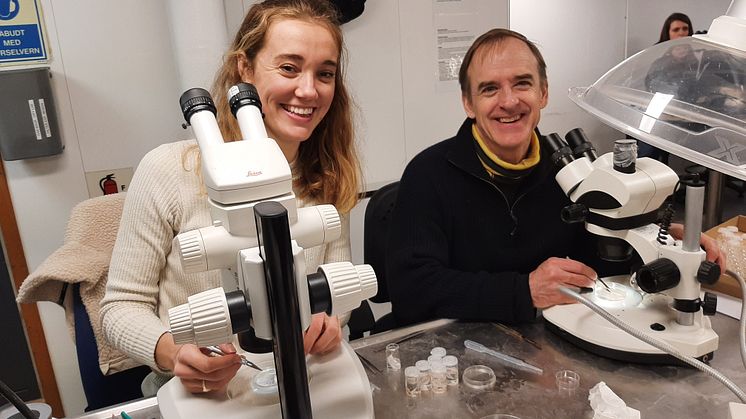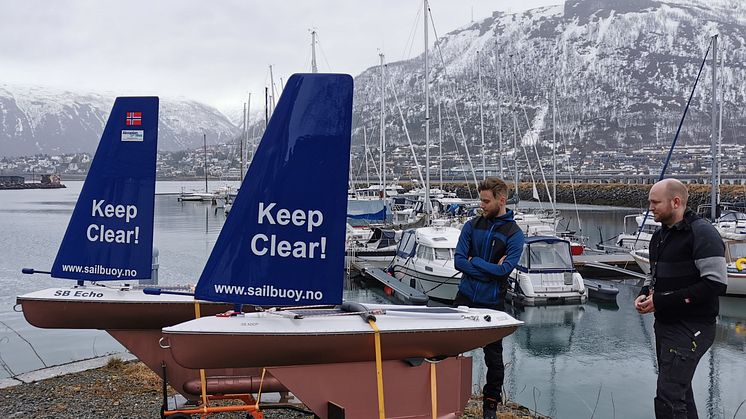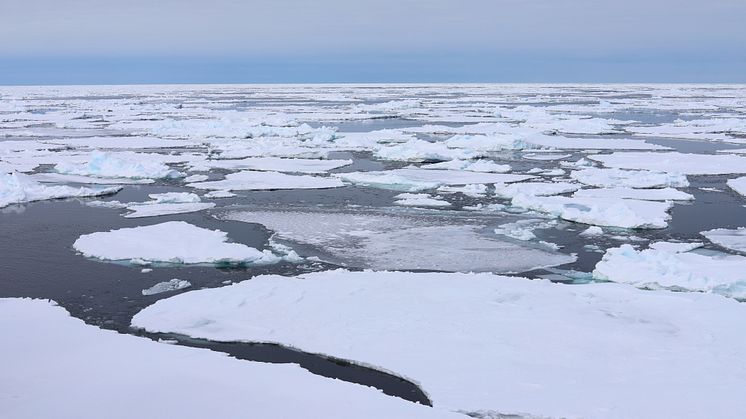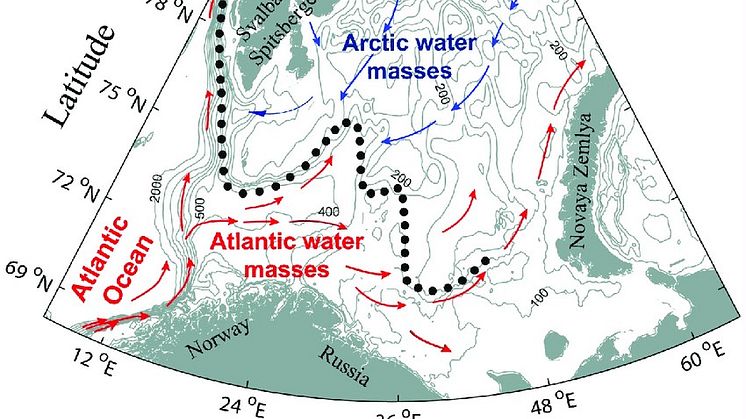
Nyhet -
Advanced autonomous robotics for environmental data collection at the Polar Front
In cooperation with the Nansen Legacy programme led by UiT The Arctic University of Norway, Akvaplan-niva will contribute to a PhD course during a research cruise to the Northern Barents Sea. The cruise will start in Tromsø on May 14th and end in Tromsø on May 22nd. The key idea behind the cruise is to carry out a detailed characterization of the Polar Front using a combination of traditional and autonomous sampling platforms and techniques. To this end, Equinor is financing the deployment of the Akvaplan-niva fleet of gliders which comprises two Seaglider Hydroid M1 and two Sailbuoys (Offshore Sensing) each rigged with advanced sensors. The cruise will be a direct follow up of a study carried out in May 1999 and 2000 (See map). This will allow a characterization of the Polar Front in space and time.
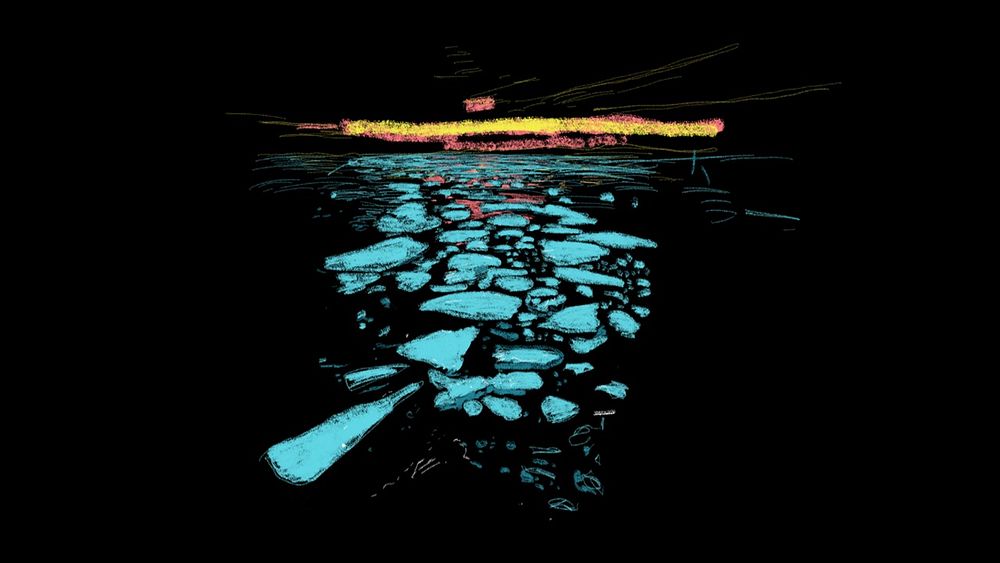
Illustration: Scenery of the ice edge at the polar front
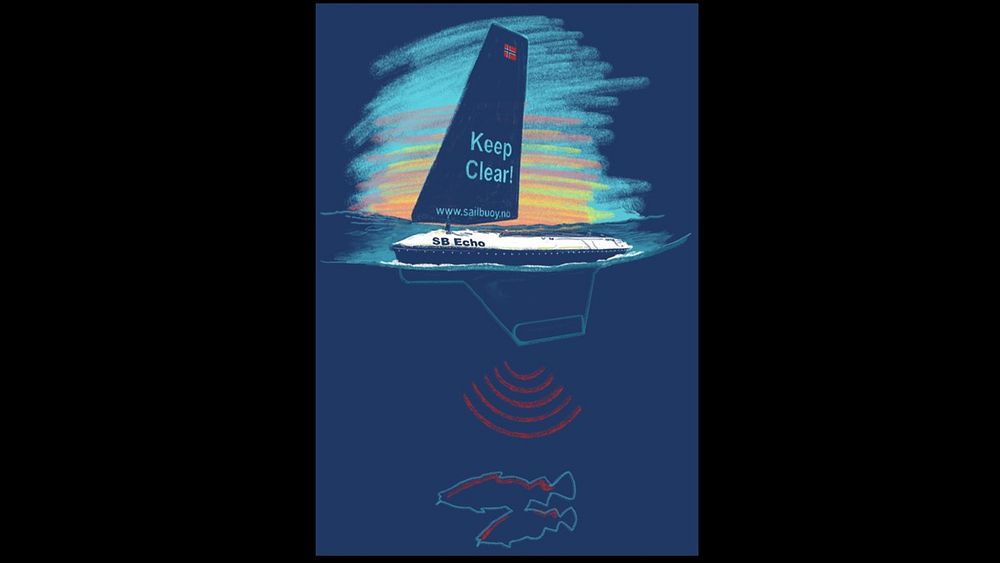
Illustration: Sailbuoy rigged with the WBT mini EK80 echosounder of SIMRAD to characterize the mesopelagic layer
The aim of the study is to describe how physical processes at different scales influence ecosystem traits across the Polar Front. The Front is defined in a variety of ways (sea surface temperature gradients, density gradients, biological assemblages), and sampling across the Front (at approximately 30° E) can help tease apart which parameters best contribute to the biological response in the region. Work will include characterizing the status of the spring bloom, anticipated to occur in the region during the cruise, at both sides of the Front. In addition to this there will be a focus on standing stocks of phytoplankton, zooplankton, fish and benthos. The role of the ice edge as a feature that contributes to, amplifies, or even diminishes the effects of the Polar Front will also be investigated. Net samples for phytoplankton and zooplankton, ice cores, primary productivity and algal physiology assays, deployment of a laser optical plankton counter (most likely in conjunction with the UVP6 automated in situ underwater video profiler system), CTD (plus O2, fluorescence, turbidity, and light) casts, nutrient analysis, sampling for larval/juvenile fish using nets and trawls are all planned activities.
Akvaplan-niva will deploy one Seaglider rigged for oceanographical data collection and sea mammal identification and a second one rigged with an optical sensor named "UVP6" (Hydroptic) for plankton ecology. The integration of the UVP6 in the M1 Seaglider is a novel functionality which is developed by the European BIOGLIDER project financed by the ERAT-Net MATERA program (https://www.akvaplan.niva.no/mynewsdesk-articles/ocean-drones-to-study-calanus-migration/). Cyprus Subsea Consulting and Services has integrated the UVP6 and will operate the Seagliders. Additionally, there will be one Sailbuoy rigged with an echo sounder EK80 from SIMRAD and a Sailbuoy rigged with an ADCP (Aanderaa) to measure ocean current. The Sailbuoys will be left on site for several weeks for long term data acquisition and once the survey is completed, they will cross the Barents Sea to be picked up in Tromsø by the Akvaplan-niva field vessel MS Louise (https://www.akvaplan.niva.no/ms-louise/).

Illustration: Seaglider M1 for sub sea data collection in physical oceanography and zooplankton ecology
The combination of classic sampling from a research vessel along with advanced autonomous vehicles will help to collect high resolution data in space and time to better characterize the Polar Front. This will contribute to an advanced understanding of the Polar Front structure, functioning and role in the Barents Sea ecosystem.

